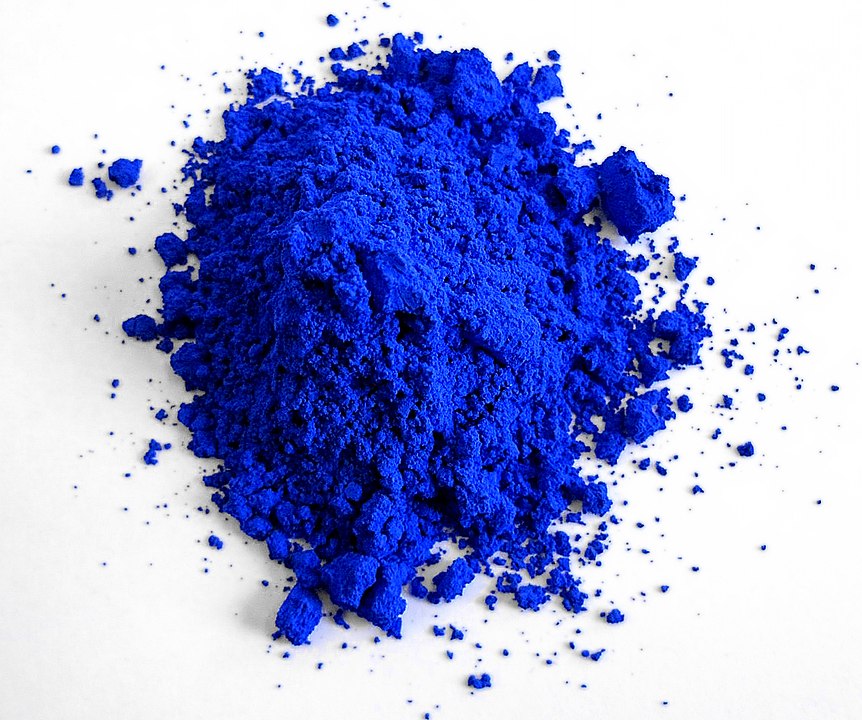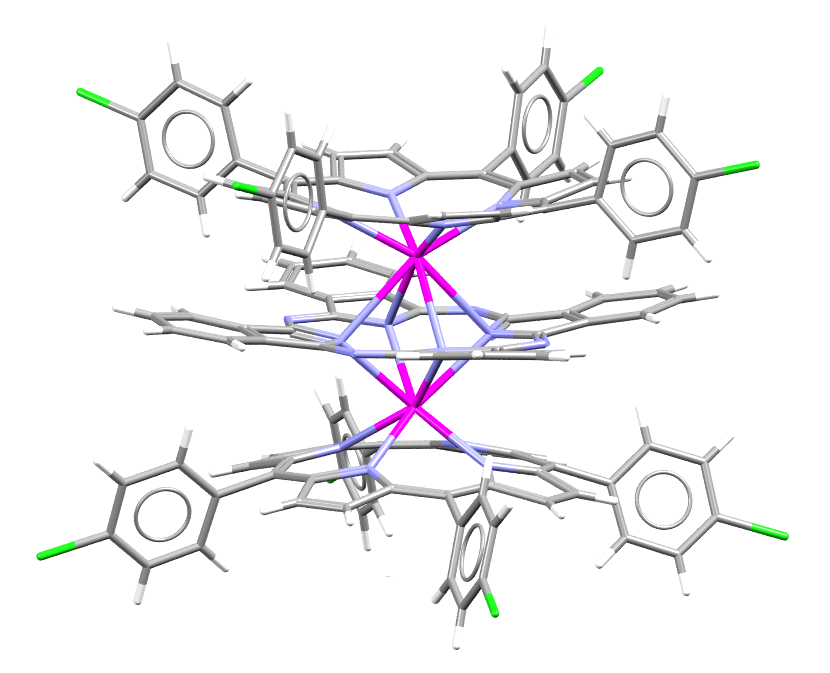Yttrium
Yttrium:

YInMn blue, discovered by Prof. Mas Subramanian and Andrew Smith, is the first inorganic blue pigment discovered since cobalt blue. Photo by Mas Subramanian, CC BY-SA 4.0
Facts about Yttrium:
- Yttrium: Yttrium is a soft silver-metallic element
- Fun fact about Yttrium: Yttrium is named after the Swedish village of Ytterby, which has a nearby quarry containing quartz and feldspar, among other minerals.
- Chemical symbol: Y
- Atomic number: 39
A crystal structure containing Yttrium:

Image showing a Yttrium (shown in Magenta) based triple-decker complex.
Facts about this structure:
- Formula: C120 H64 Cl8 N16 Y2,C H2 Cl2
- Structure name: (μ2-Phthalocyaninato)-bis(meso-tetrakis(4-chlorophenyl)porphyrinato)-di-yttrium(iii) dichloromethane solvate
- Fun fact about the structure: This is an example of Yttrium behaving like rare-earth elements as the other triple-decker complexes synthesized are lanthanide based.
- CSD refcode: ACEKID (What’s this?)
- Associated publication: Xuan Sun, Renjie Li, Daqi Wang, Jianmin Dou, Peihua Zhu, Fanli Lu, Changqin Ma, Chi-Fung Choi, D.Y.Y.Cheng, D.K.P.Ng, N.Kobayashi, Jianzhuang Jiang, European Journal of Inorganic Chemistry, 2004, 3806, DOI: 10.1002/ejic.200400289
More about Yttrium:
In 1781, Karl Arrhenius found a black rock in Ytterby, Sweden and passed it on to Johan Gadolin. In 1794, Gadolin fully analyzed the rock and announced the discovery of yttrium in the form of yttrium oxide. Yttrium is typically found in rare-earth minerals such as gadolinite and is thus considered a rare-earth element. Due to its attractive physical and thermal properties, yttrium is often used to enhance other materials. For example, yttrium is used to increase the strength of aluminum and magnesium alloys, and in the form of yttrium oxide provides heat and shock resistance to camera lenses. Another application of yttrium is in the red emitting component for TV screens that use cathode-ray tubes. In 2009, Prof. Mas Subramanian and associates at Oregon State University discovered that yttrium, combined with indium and manganese, produces a non-toxic blue pigment, the first new blue pigment discovered since cobalt blue over 200 years ago.
Learn More About the International Year of the Periodic Table (IYPT) in Crystals Project:
This project (#IYPTCrystals) is part of the International Year of the Periodic Table celebration (#IYPT2019), read more about the project here.
You can follow us on social media; search for #IYPTCrystals or follow The CCDC on X @ccdc_cambridge on Facebook ccdc.cambridge, on Instagram ccdc_cambridge or on YouTube CCDCCambridge.
Understand some of the terms and concepts used with our Frequently Asked Questions page here.
A 3D visualization showing Yttrium in a real crystal structure: